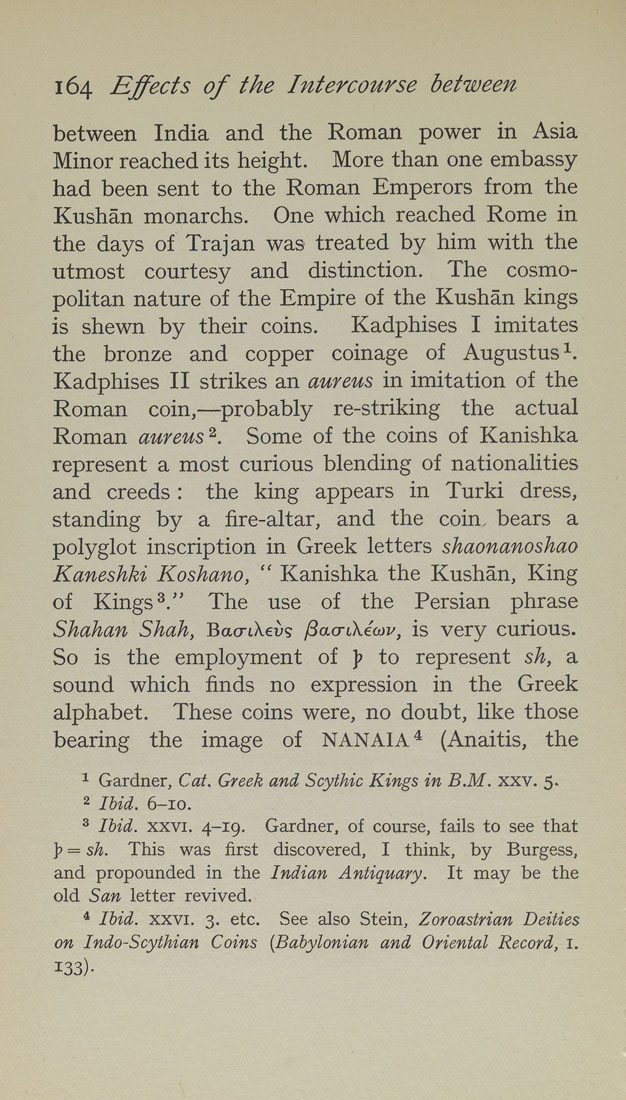164 Effects of the Intercourse between
between India and the Roman power in Asia
Minor reached its height. More than one embassy
had been sent to the Roman Emperors from the
Kushan monarchs. One which reached Rome in
the days of Trajan was treated by him with the
utmost courtesy and distinction. The cosmo-
pohtan nature of the Empire of the Kushan kings
is shewn by their coins. Kadphises I imitates
the bronze and copper coinage of Augustus 1.
Kadphises II strikes an aureus in imitation of the
Roman coin,—probably re-striking the actual
Roman aureus'^. Some of the coins of Kanishka
represent a most curious blending of nationalities
and creeds: the king appears in Turki dress,
standing by a fire-altar, and the coin, bears a
polyglot inscription in Greek letters shaonanoshao
Kaneshki Koshano, " Kanishka the Kushan, King
of Kings ^." The use of the Persian phrase
Shahan Shah, Bao-tXevs ^acrtXecov, is very curious.
So is the employment of ]> to represent sh, a
sound which finds no expression in the Greek
alphabet. These coins were, no doubt, like those
bearing the image of NANAIA* (Anaitis, the
1 Gardner, Cat, Greek and Scythic Kings in B.M. xxv. 5.
2 Ibid. 6-10.
^ Ibid. xxvi. 4-19. Gardner, of course, fails to see that
]> == sh. This was first discovered, I think, by Burgess,
and propounded in the Indian Antiquary. It may be the
old San letter revived.
* Ibid. xxvi. 3. etc. See also Stein, Zoroastrian Deities
on Indo-Scythian Coins {Babylonian and Oriental Record, i.
133)-
|








